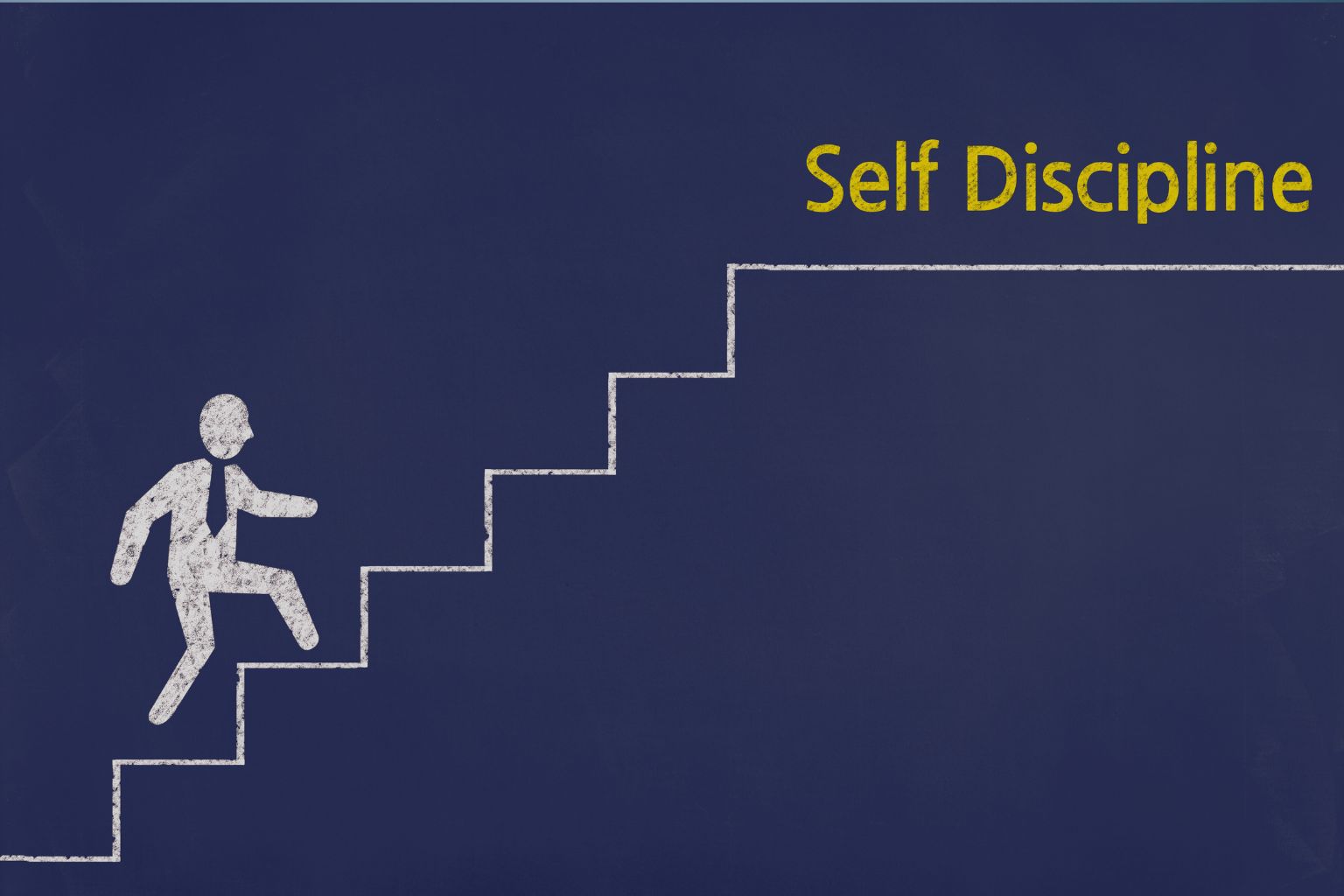Stagnant goals are those aspirations you’ve set—whether launching a business, getting fit, or writing a book—that haven’t progressed despite your initial excitement. To achieve stagnant goals, you need to recognize them as more than just unfulfilled dreams—they’re opportunities waiting for a structured approach.
You’ve got your vision board pinned up, bursting with images of your dream life—a thriving business, a healthier body, or financial freedom. Every glance at it sparks a surge of excitement, but six months later, nothing’s changed. The same goals stare back at you, untouched, while frustration creeps in. Sound familiar? You’re not alone. Countless dreamers hit this wall, wondering why their big plans remain just that—plans. The secret to breaking through? It’s not more motivation or willpower. It’s learning how to achieve stagnant goals with small, consistent steps fueled by mental discipline for success.
This isn’t about overhauling your life overnight. It’s about mastering daily progress to turn your vision into reality. In this post, we’ll unpack why your goals are stuck, share five proven strategies to achieve stagnant goals, and show you how real people have transformed their lives with mental discipline. Get ready to feel energized, empowered, and equipped with a blueprint to move forward—one step at a time.
What Are Stagnant Goals?
Stagnant goals are those aspirations you’ve set—whether launching a business, getting fit, or writing a book—that haven’t progressed despite your initial excitement. They’re the dreams pinned to your vision board, gathering dust because life, distractions, or self-doubt got in the way. To achieve stagnant goals, you need to recognize them as more than just unfulfilled dreams—they’re opportunities waiting for a structured approach.
Key Characteristics of Stagnant Goals:
- No Measurable Progress: You’ve made little to no headway in weeks or months.
- Recurring Frustration: You feel stuck, revisiting the same goals without results.
- Overwhelm or Avoidance: The goal feels too big, leading to procrastination or inaction.
Why It Matters: Recognizing stagnant goals is the first step to breaking free. With mental discipline for success, you can turn these stalled dreams into actionable plans.
Why Your Goals Are Stagnant: The Hidden Roadblocks
Stagnation feels like treading water in a sea of dreams. You want to move forward, but something holds you back. The truth is, achieving stagnant goals isn’t about a lack of desire—it’s about missing the right systems. Here are the common culprits:
- Overwhelm from Big Goals: Grand visions are inspiring, but without breaking them into manageable steps, they feel impossible.
- Inconsistent Action: Relying on bursts of motivation leads to starts and stops, not progress.
- Distractions and Procrastination: Daily chaos—emails, social media, or self-doubt—steals your focus.
- Lack of a Success System: Without a structured approach, even the best intentions fizzle out.
The stakes are high. Stagnant goals can lead to missed opportunities, eroded confidence, and a nagging sense that you’re falling short of your potential. But here’s the good news: with mental discipline for success, you can overcome these roadblocks.
Key Takeaway: Stagnation isn’t a sign of failure—it’s a signal you need a smarter approach to achieve stagnant goals.
Is Stagnation a Feeling or a Real Thing?
Stagnation feels like being trapped in quicksand—your efforts seem to sink, and progress feels out of reach. But is it just a feeling, or is it real? The answer is both. Stagnation is a real lack of progress, measurable by your unchanged results, but it’s also amplified by emotions like frustration, self-doubt, or fear of failure. These feelings can make stagnation seem insurmountable, but they’re a natural part of the journey.
Why Stagnation Feels Real:
- Emotional Weight: The gap between your vision and reality creates disappointment, making stagnation feel like a heavy burden.
- Visible Evidence: Unfinished projects or untouched goals confirm the lack of progress, reinforcing the sense of being stuck.
Why It’s a Feeling: Your perception of stagnation is often magnified by comparing yourself to others or focusing on what’s not working, which can distort reality and sap motivation.
Key Takeaway: Stagnation is both a measurable state and an emotional experience. Understanding this duality helps you tackle it with clarity and mental discipline.
Why Feeling Stagnant Is Normal
If you’re feeling stuck, take heart—you’re not failing. Feeling stagnant is a universal part of chasing big dreams. Entrepreneurs, creatives, and high-achievers all face moments where progress stalls. Here’s why this is normal:
- Growth Is Non-Linear: Success isn’t a straight line. Plateaus are natural as you learn, adjust, and build new skills.
- Overwhelm Is Common: Big goals can feel daunting, leading to paralysis. This is your brain’s way of protecting you from stress.
- Life Gets in the Way: Unexpected challenges—work, family, or distractions—can pause progress, but they don’t define your potential.
Why It’s Okay: Feeling stagnant signals you’re ambitious. Only those with big goals notice the gap between where they are and where they want to be. With mental discipline for success, you can turn this frustration into fuel.
Real-Life Example: Maya, a graphic designer, felt stagnant after months of planning her online portfolio without launching it. She realized her fear of imperfection was normal but paralyzing. By embracing small steps, she launched her site and landed her first client. Achieving stagnant goals started with accepting the feeling as part of the process.
How Do You Know for Sure If You’re Stagnating Your Goals?
Not sure if your goals are truly stagnant? Here are clear signs to confirm and address stagnation:
- No Progress in 3+ Months: If you haven’t taken meaningful steps toward your goal, it’s likely stagnant.
- Repeated Excuses: You keep saying, “I’ll start tomorrow,” or “I’m too busy,” avoiding action.
- Lack of Clarity: You’re unsure what the next step is, leading to indecision.
- Emotional Drain: Thinking about the goal brings frustration, guilt, or dread instead of excitement.
What to Do: Track your actions over a week. If you’re not dedicating time to your goal, it’s time to apply mental discipline and take small steps to achieve stagnant goals. Journaling or using a goal-tracking app can reveal patterns and spark action.
Challenge: Reflect on one goal. Have you taken action this month? If not, commit to one small step today to break the cycle.
Progress vs. Perfection When Addressing Your Goals
One of the biggest barriers to achieving stagnant goals is chasing perfection. You might delay starting because you want everything to be “just right”—the perfect plan, the perfect moment, or the perfect outcome. But perfection is the enemy of progress. Mental discipline prioritizes consistent action over flawless results.
Why Progress Wins:
- Builds Momentum: Small steps create a snowball effect, leading to bigger wins.
- Boosts Confidence: Every action, even imperfect, reinforces your ability to move forward.
- Adapts to Reality: Progress allows for learning and adjusting, while perfection demands unrealistic control.
How to Choose Progress:
- Accept “good enough” for your first draft, pitch, or workout.
- Focus on consistency—30 minutes daily is better than one perfect hour a month.
- Celebrate small wins to trigger serotonin and keep motivation high.
Real-Life Example: James, a writer, wanted to publish a novel but stalled for years, tweaking his first chapter. By shifting to progress—writing 200 words daily, imperfections and all—he finished his draft in six months. Achieving stagnant goals meant prioritizing action over perfection.
Key Takeaway: To achieve stagnant goals, embrace progress over perfection. Small, imperfect steps fueled by mental discipline lead to big results.
Let’s dive into five actionable strategies to help you achieve stagnant goals and build unstoppable momentum.
5 Proven Strategies to Achieve Stagnant Goals
Ready to turn your vision board into reality? These five strategies blend mental discipline, practical steps, and real-life success stories to help you achieve stagnant goals with daily progress. Each one is designed to spark dopamine with small wins, boost serotonin through confidence, and ignite oxytocin by connecting you to your purpose.
1. Break Goals into Micro-Steps for Daily Wins
Big goals are exciting but overwhelming. To achieve stagnant goals, break them into tiny, actionable steps you can tackle daily. This mental discipline hack creates momentum by making progress feel achievable.
How to Start: Take one goal and divide it into micro-steps. Want to launch a business? Start with “research one competitor” or “write a tagline.” Commit to one micro-step daily, and track it in a journal.
Why It Works: Micro-steps trigger dopamine with quick wins, reinforcing your commitment. This builds a habit of consistent action, a cornerstone of mental discipline for success.
Real-Life Example: Lisa, a budding entrepreneur, dreamed of starting a bakery but felt paralyzed by the scope. She started with one micro-step: baking a single recipe daily. Within three months, she had a menu, a logo, and her first pop-up event. Achieving stagnant goals started with one small step.
Challenge: Pick one stagnant goal. What’s one micro-step you can take today? Do it now and feel the rush of progress.
2. Use the “2-Minute Rule” to Overcome Procrastination
Procrastination is the enemy of progress. The 2-minute rule is a simple mental discipline hack to achieve stagnant goals by making the first step so easy you can’t say no.
How to Start: Identify the first 2-minute action for any goal. For example, instead of “write a book,” start with “write ono sentence.” Set a timer and begin. You’ll often keep going once you start.
Why It Works: Starting small bypasses resistance, sparking momentum and reducing the need for motivation. It’s a practical way to embody mental discipline.
Real-Life Example: Tom, a fitness coach, wanted to create an online course but kept delaying. Using the 2-minute rule, he started by drafting one slide. That small action led to a full course outline in a week, proving he could achieve stagnant goals with tiny steps.
Challenge: What’s a 2-minute action you’ve been avoiding? Try it today and watch procrastination melt away.
3. Design a Distraction-Free Environment
Your environment shapes your focus. A cluttered desk or buzzing phone can derail even the best intentions. To achieve stagnant goals, create a space that supports mental discipline.
How to Start: Clear your workspace of non-essentials. Turn off notifications, use website blockers, and set up a dedicated area for focused work. Schedule 30 minutes daily for uninterrupted progress.
Why It Works: A distraction-free environment reduces decision fatigue, making it easier to take consistent action. This aligns with the success system of daily progress.
Key Takeaway: Your space is your ally in achieving stagnant goals. Make it work for you.
4. Anchor Your Actions to Your “Why”
Goals stagnate when you lose sight of their purpose. A powerful mental discipline hack is to connect your daily actions to your deeper “why”—the reason your goal matters.
How to Start: Write down why your goal is important (e.g., “I want to grow my business to support my family”). Keep this visible—on your desk or phone. Before each task, remind yourself of this purpose.
Why It Works: Your “why” taps into oxytocin, fostering emotional connection to your goals. This keeps you motivated even on tough days, reinforcing mental discipline for success.
Real-Life Example: Sarah, a single mom, wanted to earn a degree but struggled with time. By anchoring her study sessions to her “why”—giving her kids a better future—she studied 30 minutes daily and graduated with honors. Achieving stagnant goals became her reality.
Challenge: What’s your “why”? Write it down and read it before your next task.
5. Track Progress to Build Confidence
Nothing boosts confidence like seeing progress. Tracking your daily wins is a mental discipline hack that helps you achieve stagnant goals by making your efforts visible.
How to Start: Use a simple tracker—a notebook, app, or spreadsheet—to log daily actions toward your goal. Celebrate small milestones, like completing five micro-steps in a week.
Why It Works: Tracking triggers serotonin by showing you’re moving forward, even slowly. This builds confidence and reinforces the habit of daily progress.
Key Takeaway: To achieve stagnant goals, measure your progress. Small wins add up to big results.
The Power of a Proven Success System
These strategies are a fantastic start to achieve stagnant goals, but lasting transformation requires more than tips—it demands a structured success system. Imagine the confidence of knowing exactly what to do each day to move closer to your dreams. That’s what mental discipline for success offers—a proven blueprint to reprogram your mind, build unshakable habits, and turn stagnant goals into reality.
Countless dreamers have transformed their lives with this system, moving from frustration to fulfillment. You don’t have to figure it out alone. By combining daily progress with mental discipline, you can unlock your potential and make your vision board a reality.
Conclusion: Take the First Step Today
Your vision board isn’t just a dream—it’s a roadmap to your future. Achieving stagnant goals starts with small, daily actions backed by mental discipline. You’ve got the strategies—micro-steps, the 2-minute rule, a distraction-free environment, a clear “why,” and progress tracking. Now it’s time to act.
Don’t let another six months pass with the same stagnant goals. Transform your life, reprogram your mind, train your subconscious to align with your goals, build confidence, and take action regardless of your mood. Stay laser-focused and dedicate just 30 minutes daily to your goals.
Visit mentaldisciplineforsuccess.com to join our email list, download our free goal-crushing resource, or explore the Mental Discipline for Success system to learn from pros and make progress unstoppable. Start today—your future self will thank you.
FAQs About Achieve Stagnant Goals
Stagnant goals often stem from overwhelm, inconsistent action, or lack of a clear system. To achieve stagnant goals, break them into micro-steps and use mental discipline to stay consistent.
Start with small, daily actions like the 2-minute rule or micro-steps. Track your progress and anchor tasks to your “why” to build momentum and achieve stagnant goals.
Mental discipline is the foundation of consistent action. Unlike motivation, it helps you achieve stagnant goals by building habits that drive progress, even on tough days.
Motivation fades, but mental discipline keeps you going. Create a distraction-free environment, track small wins, and use a success system to achieve stagnant goals.
Yes, a structured system like Mental Discipline for Success provides a blueprint to break down goals, build habits, and maintain focus, helping you achieve stagnant goals faster.

















Share it!